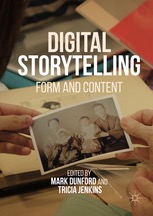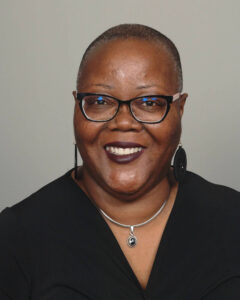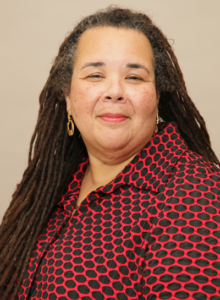storytelling
Select an item by clicking its checkbox
For the past seven months I have been immersed in storytelling. My small project grant, Black Women’s Storytelling as Healing Pedagogy, has taken me on a journey of wonder, insight, wisdom, knowledge, revelation, and so much more. I had conversations with eleven Black women storytellers who are living their ...

Digital Storytelling Form and Content
Date Reviewed: May 17, 2018
Upon reading the varied chapters that constitute Digital Story Telling: Form and Content, I could not help but be reminded of Salman Rushdie’s comments on the power of story.
Those who do not have the power over the story that dominates their lives, the power to retell it, rethink it, deconstruct it, joke about it, and change it as times change, truly are powerless, because they cannot think new thoughts. (1991, Dec. 12, New York Times)
Rushdie’s words illustrate the demands the postmodern world places on all individuals. It is a world replete with a multiplicity of stories in a myriad of forms… stories of domination and liberation, state narratives and personal accounts, corporate media renderings, and cellphone videos. In this world, the personal and political are not easily divorced. It is a world eager for new mediums which can offer the individual tools for agency and a space in which to tell, retell, rethink, deconstruct, joke about, and change their story. Digital Storytelling (DS) appears to be one such medium.
What is DS? This volume’s editors, Mark Dunford and Tricia Jenkins, describe it as “a simple, creative process whereby people with little or no experience of computers gain the skills needed to tell a personal story as a two minute video using predominately still images combined with recorded voice-over, and often including music and/or other sounds” (3). The end products are “self-representational stories which emerge from a collaborative workshop process using a ‘Story Circle,’ in which a range of writing stimuli and other activities are used to develop trust within the group and ‘find’ the story” (3). Much of this definition comes from a pioneer in the field of DS, Joe Lambert, whose Digital Storytelling workshops, terminology, and methods have shaped the DS movement.
DS is a form of participatory media in which political activism is embedded in its very practice. Lambert describes how in the 1990s he and those he was working with “thought of the Internet, new low-cost digital media production tools, and the distribution opportunities of the web as major advances that could promote global democracy and liberation” (22). The advent of the Internet for such a medium is tantamount to the proliferation of the printing press in sixteenth-century Europe. One need only look to social media platforms such as Facebook, YouTube, and Instagram to see how the Internet and low-cost media production tools have changed what we watch and how we watch it. DS is a precursor to this platform proliferation and the motivations driving it as a process appear to have been less fiscally motivated. One of the paramount intentions of DS is to provide the voiceless the means to be heard. Of course, DS workshops have facilitators and funders, both of which, intentionally or not, are intimately involved in the creation and dissemination of these personal stories.
The volume is segmented into four elements or parts: Practice (five case studies from Kenya to the UK of DS in action); Content (pieces addressing the role content, especially content of a political [Simsek] or socially provocative [Kuga Thas] nature, plays in how that content is created, collected, received, parsed, and disseminated [Lewis and Matthews] and licensed [Spurgeon]); Form (insights garnered from when the cultural specificity of the DS model requires modification such as in Japan, Romania, and Ireland); and Understanding (three essays honing in on the limits and potential of DS as a political and personal force in the world).
The volume culminates with Nancy Thumim’s chapter “Therapy, Democracy, and the Creative Practice of Digital Storytelling” in which she reflects on the unifying themes of the book (DS as democratizing work, DS as therapy, DS as meaning-making, reflection, presentation, and representation) as well as the logistical and ethical challenges DS faces (issues of ownership in regard to co-created media, the afterlife of created materials, restructuring workshops to accommodate participants of disparate backgrounds and differing needs). DS, in its varied iterations, straddles the personal and public and opens up a space for creativity among communities created by the DS workshops and those affected by their material output (artifacts).
Perhaps the most compelling aspects of this volume are the stories (as found in Rainbird, Henry, Hardy and Sumner, Lewis and Matthews, Ogawa and Tsuchiya, Alexandra, and Brushwood Rose) of those persons challenged with mediating and assisting others (often those whose voices go unheard) through the process of narrating their own stories. As an academic advisor, the power of storytelling for self-actualization is readily apparent to me. Like the DS workshop facilitators in this book, academic advisors are involved in a co-creative narrative process. Advisors help students reflect on their goals and values and provide them with tools and mechanisms for authoring their own academic life story. The examples of DS workshop facilitators agonizing over how active to be in the creation of these personal stories should resonate with any reader who works in a co-creative capacity (advisors, administrators, teachers, parents, therapists, and so forth). The stories presented in each of these chapters are rather remarkable and, indeed, powerful. Anyone interested in modern media, narrative, social activism, communication studies, film, as well as those versed in DS scholarship, will find this a compelling read.
The car service arrived at my house. I grabbed my purse, suitcase, and briefcase and hurried out the door making sure it was locked behind me. As scheduled, we stopped to pick up a colleague who was also attending the conference in Toronto, Canada. Driving east on Highway 78 and almost ...

Portfolio to Go: 1000+ Reflective Writing Prompts and Provocations for Clinical Learners
Date Reviewed: November 30, -0001
From Dewey (How We Think [Boston: D.C. Heath,1933]) to Schön (Reflective Practitioner [New York: Basic 1983]), and most recently Palmer and Zajonc (The Heart of Higher Education [New York: Jossey Bass 2010]) and Barbezat and Bush (Contemplative Practices in Higher Education [New York: Jossey Bass, 2013]), reflective practice has a long pedagogical history, especially in clinical training. Reflective practice calls for revisiting one’s past or present experiences in order to analyze, reconsider, and mine the learning in them for use in the future. Reflective practice is increasingly being employed in higher education along with the use of contemplative practices as a means by which to increase student use of critical thinking skills and embodiment of “competence, compassion, collaboration, and a tolerance for ambiguity in the face of uncertainty” (Peterkin, 3).
Portfolio to Go offers a multitude of questions that encourage deep reflection on clinical and personal experiences by students in healthcare training programs. Although some prompts refer specifically to clinical and medical settings (for example, “Describe the hospital corridors at 3 a.m.” [80]), most deal with far broader settings (“Write a story about the last time you were yelled at” [42]) and could be used by students in a wide range of disciplines and in classroom or small group settings. Peterkin encourages their use primarily in reflective writing such as journals, critical incident reflections, or stand-alone assignments. He identifies writing as a tool that increases awareness of feelings and thoughts about one’s work, but also as a vehicle that deepens critical thinking, enriches ethical insights in complex situations, and encourages development of one’s professional identity. Inclusion of reflective writing in student portfolios provides professors or future employers a glimpse of personal and professional learning and identity formation over time. Although Peterkin intends the book for students, it would be useful as an educator’s guide to the inclusion of reflective assignments in clinical courses.
In the opinion of this reviewer, the most valuable parts of this book are the chapters that coach and teach students how reflection and storytelling can maximize professional growth. The chapters include how to critically reflect in one’s writing, how to move from reflection to actionable practice, how to form and participate in a reflective writing group, and how to deal with internal criticism. In one chapter, Peterkin differentiates criticism (negative) from critique (positive) by noting that the former finds fault, notes what is missing, and attacks the writer, while the latter identifies strengths, looks for possibilities, and is honest but kind. In the chapter on moving from reflection to action, the author notes simple but profound elements of clinical visits that students often struggle to implement such as asking open-ended questions (“what would you like me to know about you?” or “what is one thing you haven’t asked me, yet?”), listening for patient concerns and fears, noticing metaphors in conversation and using them to expand understanding, and being aware of body language (standing, sitting, touching) and how it impacts relationship.
Educators often find assessing reflective writing and discussions difficult because of the personal and vulnerable nature of reflection. Peterkin offers a very useful rubric (118-120) that provides ways by which to measure levels of participation and reflection.
Portfolios to Go is a helpful volume for any educator interested in exploring the value of reflective practice and in including reflective assignments in a classroom or clinical training program.
I was scheduled to write a blog post on teaching about controversial issues and how they are shaping contemporary Muslim identities in North America. Guessing, however, that many readers may be fatigued from the barrage of unfavorable events – from the U.S. travel ban on citizens of seven Muslim-majority countries ...


